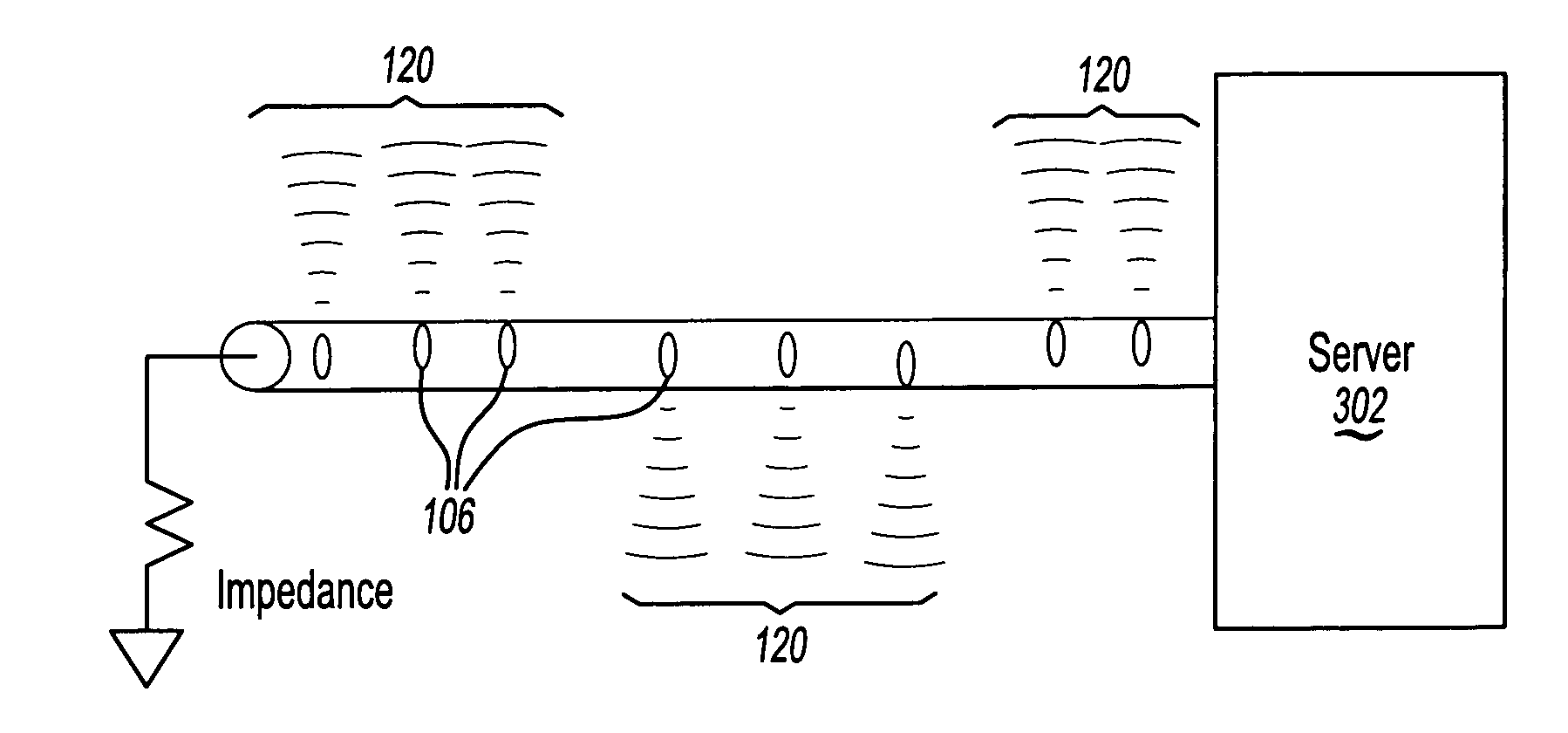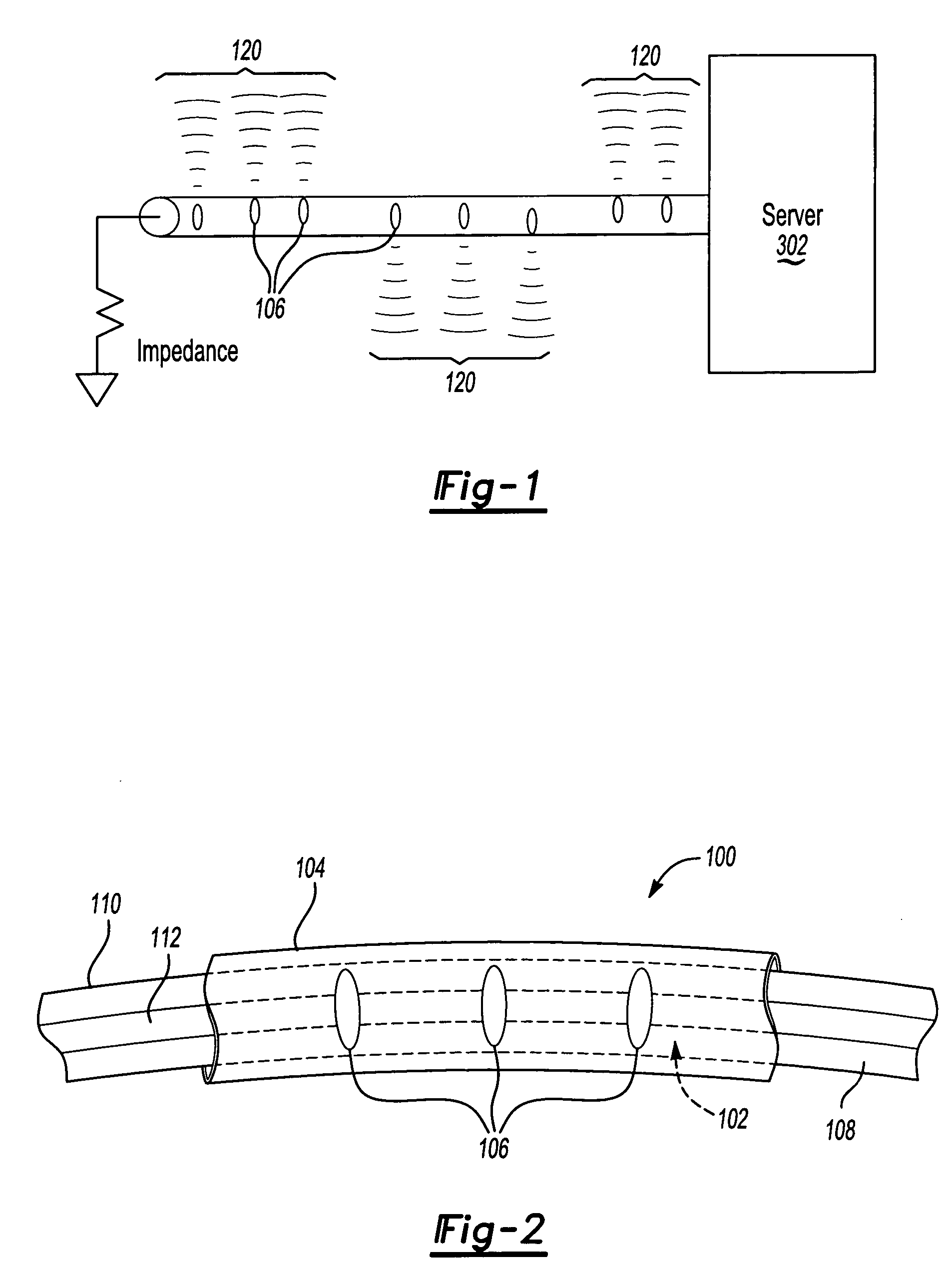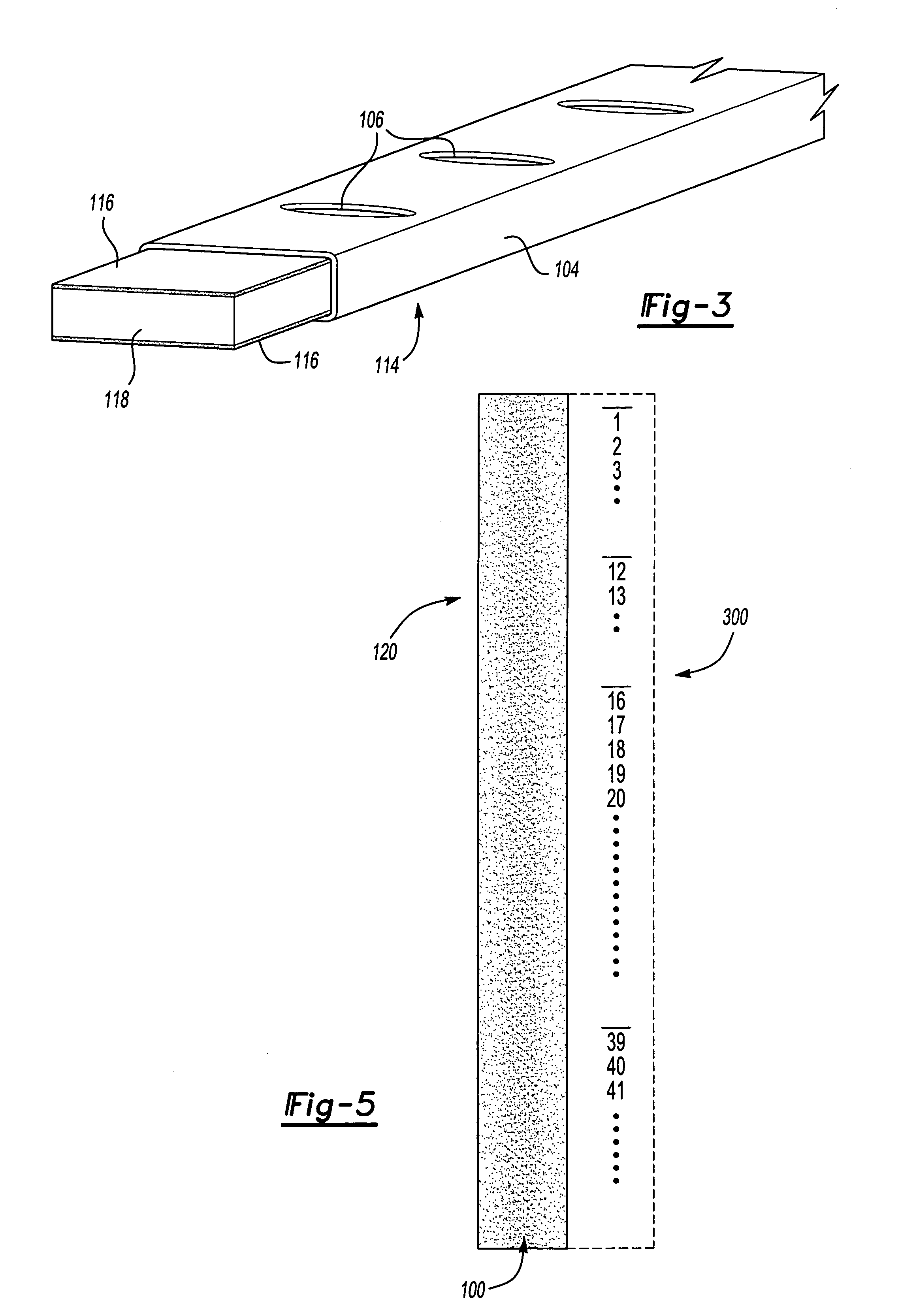Multi-receiver communication system with distributed aperture antenna
a communication system and antenna technology, applied in the field of antennas, can solve the problems of increasing the likelihood of interference with nearby aircraft and/or airport systems, creating an uneven field distribution, and more opportunities for field leakage outside the cabin, so as to reduce the distance between the antenna and the receiver, reduce the overall power requirements of the antenna, and reduce the propagation mode and multi-path effect.
- Summary
- Abstract
- Description
- Claims
- Application Information
AI Technical Summary
Benefits of technology
Problems solved by technology
Method used
Image
Examples
Embodiment Construction
[0016]FIGS. 1 through 3 illustrate a distributed aperture antenna 100 structure according to two possible embodiments of the invention. In the embodiment shown in FIG. 2, the antenna 100 is a coaxial cable that includes a conductive core 102 and an insulating shield 104. The shield has a plurality of apertures 106, which serve as an energy leakage path for the conductor 104. The conductive core 102 in this embodiment includes an inner conductor 108 and an outer conductor 110 separated by a dielectric 112. In one embodiment, the antenna 100 is an air-type coaxial cable supported by a helical dielectric band. This type of antenna structure minimizes the overall weight of the antenna 100 as well as reduces insertion losses at the frequencies in which the antenna 100 may be used.
[0017]FIG. 3 illustrates another possible embodiment for the inventive antenna 100. In this embodiment, the antenna 100 is in the form of a parallel plate waveguide 114 having two strips of conducting material ...
PUM
 Login to View More
Login to View More Abstract
Description
Claims
Application Information
 Login to View More
Login to View More - R&D
- Intellectual Property
- Life Sciences
- Materials
- Tech Scout
- Unparalleled Data Quality
- Higher Quality Content
- 60% Fewer Hallucinations
Browse by: Latest US Patents, China's latest patents, Technical Efficacy Thesaurus, Application Domain, Technology Topic, Popular Technical Reports.
© 2025 PatSnap. All rights reserved.Legal|Privacy policy|Modern Slavery Act Transparency Statement|Sitemap|About US| Contact US: help@patsnap.com



